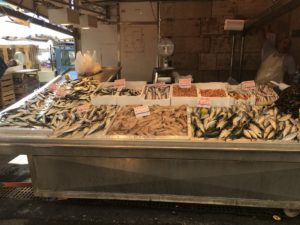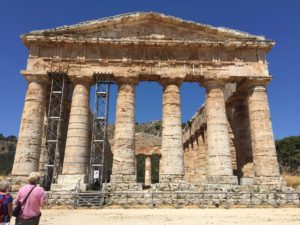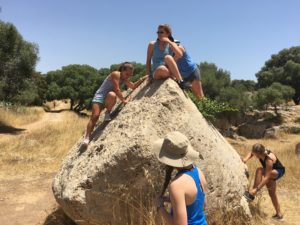…. and all through the house, all the families were scurrying, but certainly not the mouse; the bags were all flung by the doors with no care, in hopes that some packing elf would magically appear. The children were not nestled all snug in their beds, for visions of gelato danced in their heads, and mamma in her Hunter Boots and dad in his Crocs have no time to settle down for a nightcap on the docks; when up in the bedroom there arose such a clatter, they sprinted up the stairs to see what was the matter. Away to the door they flew like a flash, tried to throw open the door, but alas! The bass, vibrating the door from the woofer within, gave luster to the lyrics much to their chagrin, when what to their wondering ears should they hear, but strange tunes of cowboys and horses, oh dear! They banged on the door with immediate intent to explain to their child their mild discontent. They knew in that moment their eyes must be deceived, for their child had packed, cleaned, and was ready to leave. The parents calmly questioned their little dearest, “Now, come tell me the story, and make it quick because there is no way you are all packed, did you double check the list?!” The child glared back, the way they all do, “Uh duh, of course I did, ‘Rents, now get out, get out, get out of my room!” Just as the wet rain does fall outside the window, tears from their eyes begin to flow. Feelings of pride and joy mixed with utter disbelief; who knew their child could be both so sassy and sweet. With the music still blaring, the parents stared blankly back, but soon the familiar feelings of rage began to relax. For they knew their child was equally excited and scared, they were simply retreating into their very own lair. Soon they would be up, up, up and away in the air on an adventure of a life time in Sicily; nothing else can compare! As the parents turned away in willing retreat, they heard the beat drop, and the silence never sounded so sweet. At once they felt a small tug at their backs, and little arms reached around that nearly gave them a heart attack! They turned to see their child nestled deep in their sides, yearning for one more embrace before shutting their eyes. “To bed, to bed, sweet child of mine. Fear not the unknown, you will be fine. All your bags are packed and you are ready to go. Trust in yourself, now go, go, go.” After one last squeeze the child drew back, climbed into bed, and hit sack. Then the parents softly closed the door behind and headed down stairs to unwind. They sat on the couch with smiles on their face, looked at each other and said, “I am so proud of our child, but let’s doubled check their bag…… just in case!”
I hope you enjoyed the first blog post of The Odyssey 2019!! We welcome you to follow along with us on this journey of lifetime! Until next time….. Ciao!




































